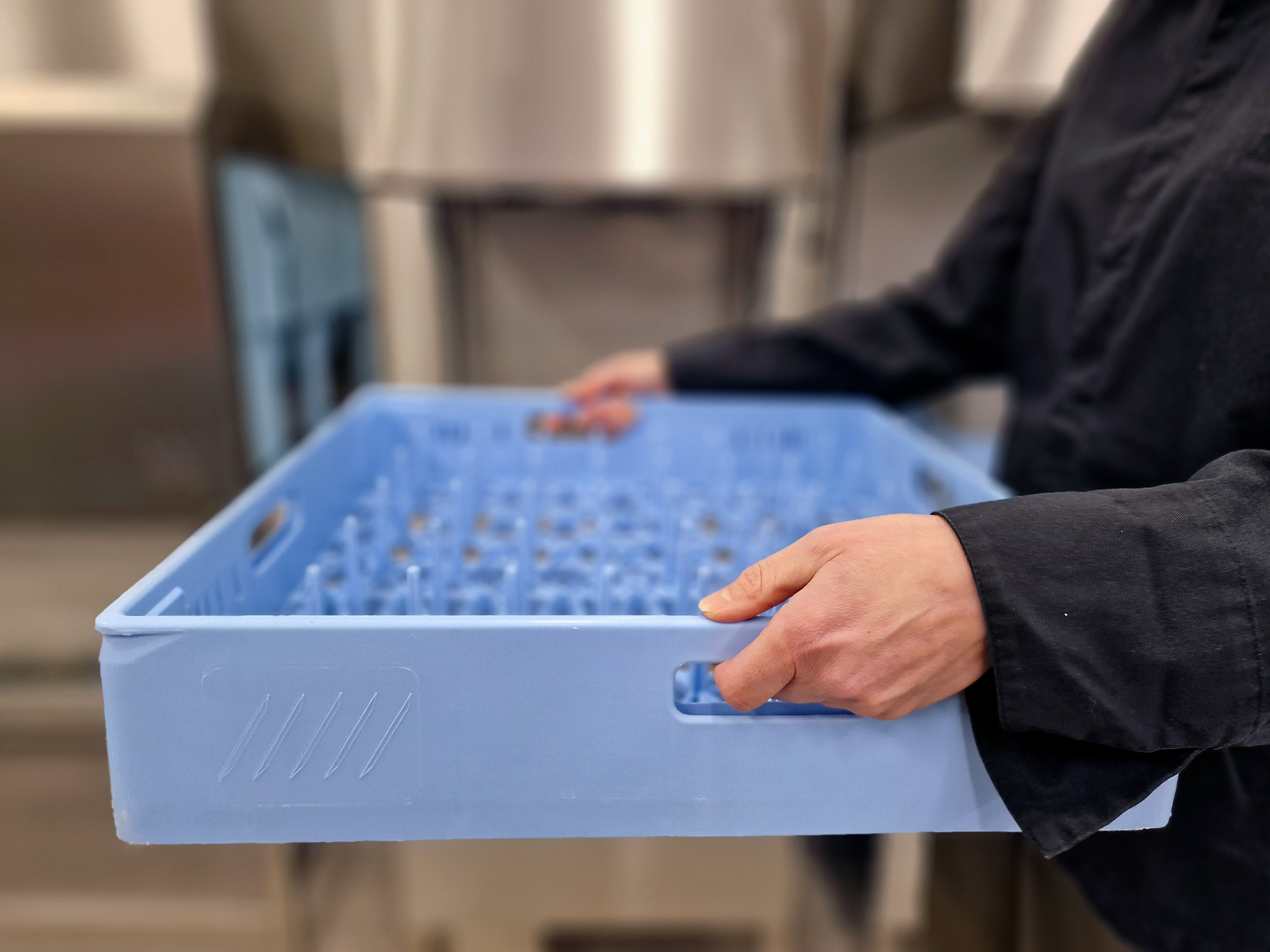Good Kitchen Design Brings many Benefits to the Everyday Life of a Professional Kitchen - Metos NO
-
Tilberedning
-
Koking
- Koking Vis alle produkter i kategorien
- Tilbake
- Kokegryter
- Matpumper
- Sous vide vannkjøler
- Trykkokeskap
- Ovner
- Koketopper
- Stekepanner
- iVario
- Pizza utstyr og pizza tilbehør
- Grill og restaurantutstyr
- Kontaktgriller, panini og takker
- Griller
- Frityrer
- Salamander og brødrister
- Pastakoker
- Sushimaskiner
- Pølsevarmeri
- Sirkulatorer
-
GN-kantiner og -brett
-
Matdistibusjon og mattransport
-
Servering og serveringslinjer
- Servering og serveringslinjer Vis alle produkter i kategorien
- Tilbake
- Buffet serie
- Varmeskuffer
- Varmerier
- Varmebenk med varm topplate
- Benk med varmeskap
- Kjølebrønner
- Kjølt skap
- Kjølebenker med skuffer
- Kjølebenker
- Pizzabenk
- Nøytrale skap
- Tallerkendispensere
- Vanndispensere
- GN deleskinner for brønner og skuffer
- Varmelamper og varmelister
-
Småutstyr servering
-
Displaymonter og kjølt serveringsmonter
-
Kaffe
-
Barutstyr og innredning
-
Isbiter og Iskrem / gelato
-
Kjøleutstyr og nedkjøling
-
Oppvask
- Oppvask Vis alle produkter i kategorien
- Tilbake
- Oppvaskmaskiner for glass
- Underbenk oppvaskmaskiner
- Frontmatet oppvaskmaskin
- Hetteoppvaskmaskiner
- Grytevaskere
- Granulatmaskiner
- Tunnelmaskiner
- Forvaskmaskiner for WD hettemaskiner
- Forvaskmaskiner for WD tunnelmaskiner
- Båndoppvaskmaskiner
- Brettoppvaskmaskin
- Vognvaskemaskin
- Multiwasher
-
Oppvask tilbehør og innredning
- Oppvask tilbehør og innredning Vis alle produkter i kategorien
- Tilbake
- Oppvaskkurver
- Bestikkbokser
- Innredning for underbenk maskiner
- Innredning for hettemaskiner
- Innredning for forvaskemaskiner
- Innredning for grovoppvaskmaskiner
- Innredning for tunelloppvaskmaskiner
- Sorteringsenheter for vaskerom
- Forspyledusjer
- Rengjøringsaggregat
- Damp- og høytrykksvasker
-
Vannfilter
-
Innredning
-
Traller og vogner
- Traller og vogner Vis alle produkter i kategorien
- Tilbake
- Bordvogner
- Serveringsvogner
- Hyllevogner
- Vogner for GN-kantiner
- Kurvvogner
- Dispenservogner
- Avdelingsservicevogn
- Redskapsvogn for kokegryter
- Brett- og bestikkvogner
- Multifunksjonell vogn
- Plattformtrall
- Bassengvogner
- Bioavfallsvogn og avfallsvogner
- Returvogn brett
- Returvogner
- Tallerkenvogner
- Melvogner og kryddervogner
- Skyllevogn for salat
- Specerivogn
- Vogner for transportkasser
- Løftevogner
- Vaskerivogner
-
Vaskeriutstyr
-
Outlet
- Outlet Vis alle produkter i kategorien
- Tilbake
- Tilberedning outlet
- Koking outlet
- Matdistibusjon og mattransport outlet
- Servering og serveringslinjer outlet
- Displaymonter og kjølt serveringsmonter outlet
- Kaffe outlet
- Barutstyr og innredning outlet
- Kjøleutstyr og nedkjøling outlet
- Oppvask outlet
- Innredning outlet
- Alle outlet produkter
-
Tilberedning
-
Koking
- Koking Vis alle produkter i kategorien
- Tilbake
- Kokegryter
- Matpumper
- Sous vide vannkjøler
- Trykkokeskap
- Ovner
- Koketopper
- Stekepanner
- iVario
- Pizza utstyr og pizza tilbehør
- Grill og restaurantutstyr
- Kontaktgriller, panini og takker
- Griller
- Frityrer
- Salamander og brødrister
- Pastakoker
- Sushimaskiner
- Pølsevarmeri
- Sirkulatorer
-
GN-kantiner og -brett
-
Matdistibusjon og mattransport
-
Servering og serveringslinjer
- Servering og serveringslinjer Vis alle produkter i kategorien
- Tilbake
- Buffet serie
- Varmeskuffer
- Varmerier
- Varmebenk med varm topplate
- Benk med varmeskap
- Kjølebrønner
- Kjølt skap
- Kjølebenker med skuffer
- Kjølebenker
- Pizzabenk
- Nøytrale skap
- Tallerkendispensere
- Vanndispensere
- GN deleskinner for brønner og skuffer
- Varmelamper og varmelister
-
Småutstyr servering
-
Displaymonter og kjølt serveringsmonter
-
Kaffe
-
Barutstyr og innredning
-
Isbiter og Iskrem / gelato
-
Kjøleutstyr og nedkjøling
-
Oppvask
- Oppvask Vis alle produkter i kategorien
- Tilbake
- Oppvaskmaskiner for glass
- Underbenk oppvaskmaskiner
- Frontmatet oppvaskmaskin
- Hetteoppvaskmaskiner
- Grytevaskere
- Granulatmaskiner
- Tunnelmaskiner
- Forvaskmaskiner for WD hettemaskiner
- Forvaskmaskiner for WD tunnelmaskiner
- Båndoppvaskmaskiner
- Brettoppvaskmaskin
- Vognvaskemaskin
- Multiwasher
-
Oppvask tilbehør og innredning
- Oppvask tilbehør og innredning Vis alle produkter i kategorien
- Tilbake
- Oppvaskkurver
- Bestikkbokser
- Innredning for underbenk maskiner
- Innredning for hettemaskiner
- Innredning for forvaskemaskiner
- Innredning for grovoppvaskmaskiner
- Innredning for tunelloppvaskmaskiner
- Sorteringsenheter for vaskerom
- Forspyledusjer
- Rengjøringsaggregat
- Damp- og høytrykksvasker
-
Vannfilter
-
Innredning
-
Traller og vogner
- Traller og vogner Vis alle produkter i kategorien
- Tilbake
- Bordvogner
- Serveringsvogner
- Hyllevogner
- Vogner for GN-kantiner
- Kurvvogner
- Dispenservogner
- Avdelingsservicevogn
- Redskapsvogn for kokegryter
- Brett- og bestikkvogner
- Multifunksjonell vogn
- Plattformtrall
- Bassengvogner
- Bioavfallsvogn og avfallsvogner
- Returvogn brett
- Returvogner
- Tallerkenvogner
- Melvogner og kryddervogner
- Skyllevogn for salat
- Specerivogn
- Vogner for transportkasser
- Løftevogner
- Vaskerivogner
-
Vaskeriutstyr
-
Outlet
- Outlet Vis alle produkter i kategorien
- Tilbake
- Tilberedning outlet
- Koking outlet
- Matdistibusjon og mattransport outlet
- Servering og serveringslinjer outlet
- Displaymonter og kjølt serveringsmonter outlet
- Kaffe outlet
- Barutstyr og innredning outlet
- Kjøleutstyr og nedkjøling outlet
- Oppvask outlet
- Innredning outlet
- Alle outlet produkter
Good Kitchen Design Brings many Benefits to the Everyday Life of a Professional Kitchen

When a professional kitchen is carefully designed from the beginning, the effects are long-lasting. The design impacts the efficiency of a professional kitchen’s day-to-day work and ultimately even the retention of its workforce.
Kitchen design is not just about placing equipment within a given framework. The process starts with the functional design, which goes through the business plan of the site – its concept and business idea. Then, attention shifts to processes, production methods, and logistics – what food is prepared, how it's prepared, and where it's delivered.
Design enables a "good flow" in daily operations
All areas of the kitchen should be designed to ensure that sequential activities, or workflow, can flow smoothly from one stage to another.
– The workflow is designed to make daily work are as efficient, smooth, and enjoyable as possible. This enables a 'good flow' in the kitchen's daily operations, says Veera Hakanen, leader of Metos' design team and kitchen designer.
Temporarily storage and unnecessary transfers should be avoided. Of course, compliance with regulatory requirements is also a part of this process.
Multi-functional equipment adds efficiency to the kitchen
Only after the functional design comes the equipment design. To make efficient use of the kitchen's expensive square footage, the choice of appliances must take into account their versatility.
– Multi-functional devices often cost a little more more, but on the other hand, they help to make efficient use of all the square metres in the kitchen - which is often tight. When one equipment can perform multiple functions, there's no need for a separate device for each. While a multi-functional equipment may cost more individually, it ultimately saves space and overall equipment costs, explains Veera.
Equipment choices also enable the kitchen's operations to scale with the daily rhythm.
– For example, it's worth considering whether two small combi ovens might be a better solution than one large one. If a restaurant has two small ovens, they can be used according to the current number of customers; when it's quieter, only one is on, and when there's a surge in visitors, the second combination oven is also switched on. This also saves energy, Veera suggests.
Every step in a professional kitchen counts
Planning always involves thinking about the steps taken by employees. They are important not only for the smooth running of the daily work, but also for optimizing the workforce and time management. The aim is to do as much as possible with as few steps as possible.
– Labour shortages are a problem for many kitchens, and this can be alleviated with good planning. Eliminating unnecessary steps is important. Activities are planned so that employees don't have to travel back and forth between different points. The planning pays attention to the day-to-day running of the kitchen so that it runs smoothly. For example, consider how often a worker must wash his or her hands, for example in the dishwashing process, and where he or she has to go to do so.
Aiming for a pleasant working environment for kitchen professionals
Veera feels that work ergonomics is becoming more and more involved in kitchen design and is being considered more and more.
– For example, working height and counter space play a big role for the user. Cleanability, the layout of corridors and passageways, floor drains and the height of the hoods also have an impact on the way the working environment is perceived. A professional kitchen designer can also think about the direction in which doors and hatches open and their importance in the user's daily life, she says.
Ergonomic design aims to create a pleasant working environment for the user, where it is comfortable to work. This can help to improve employee retention and thus tackle labor shortages.
– Nowadays, people are more willing to pay for ergonomics because they want to keep good workers happy in the kitchen. Restaurant managers, chefs, and other users are increasingly being consulted during the kitchen design stage, she concludes.
Utilizing every corner efficiently with illustrative images
3D modeling is also used to help with kitchen design. It is a helpful tool to make the most of every corner of the kitchen.
– When the customer gets to walk through their kitchen during the design phase, it clearly illustrates the entire kitchen setup. At this point at the latest, you can see if there are any corners left that could be used, Veera concludes.





